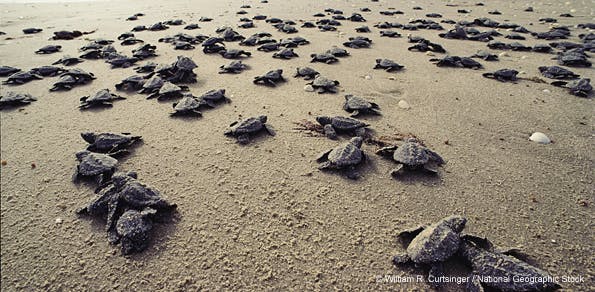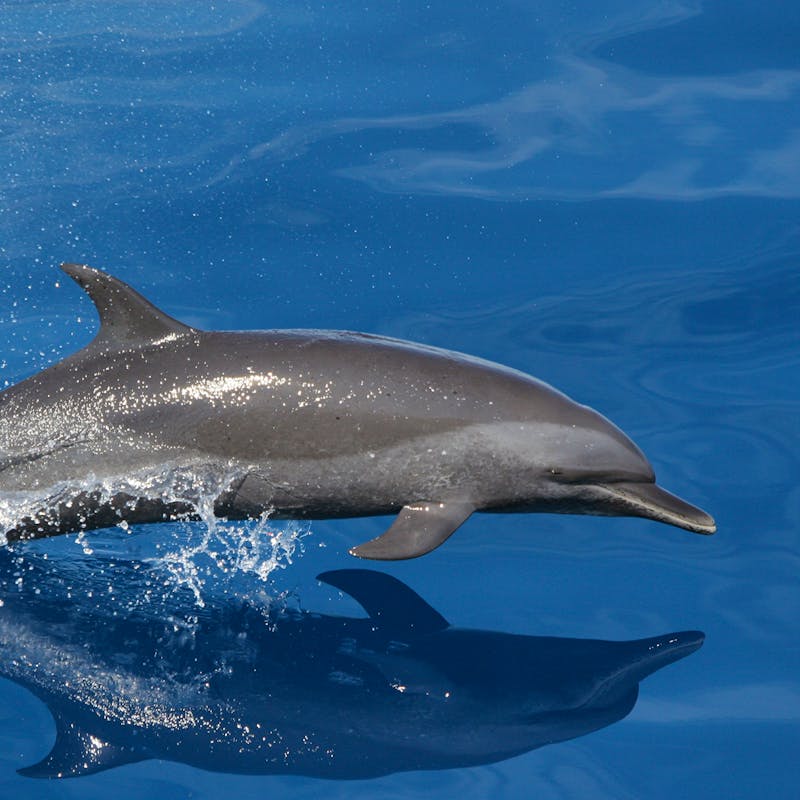Juan Carlos Cantu, Mexico Program Manager
Humans can regularly be seen on Mexico’s beaches, umbrella drink in hand. But we’re not the only ones who regularly hit the country’s beautiful sandy coastline. Literally, every sea turtle species on earth nests on Mexico’s beaches, save one that is only found in Australia. That’s why we’re known as the sea turtle capital of the world, and that’s why the way Mexico protects its sea turtles matters on a global scale.
Current Mexican law classifies all sea turtle species as endangered. But unfortunately this really only means turtles are protected from direct harvest—meaning they can’t be killed for their meat, skin, shell or eggs. Yet other factors pose serious dangers, including damage to and destruction of sea turtle habitat. Even nesting habitat, which is particularly important to the survival of these species, was not legally protected.
But not anymore, because in February, a new Mexican law (known as Official Norm-162) took effect, and it offers a whole slate of new protections for sea turtle nesting grounds in Mexico.
Previously, only the most important sea turtle nesting sites have been designated as sanctuaries and natural reserves, which allowed them some level of protection but left the majority of nesting habitat vulnerable. But now, the new regulation extends habitat protections to all turtle nesting sites. Here are just some of the things that this new and unprecedented regulation has accomplished for sea turtle nesting habitat:
Protecting Native Habitat
The new regulation forbids the removal of native vegetation in the nesting habitat. When coastal vegetation is removed, especially from sand dunes, it allows increased erosion that could eventually destroy nesting beaches. In addition, some turtles like the critically endangered hawksbill sea turtle even prefer to crawl up the beach all the way up to the vegetation to nest.
Putting Out Artificial Lights
The regulation also addresses one of the main factors that disrupt nesting turtles: artificial lights from houses, hotels and roads. These light sources can not only disorient nesting females, but they can be lethal to emerging hatchlings. As they climb their way up from their sandy nest, newly-hatched turtles look for the subtle light reflecting off the surf and waves to orient themselves towards the sea. Artificial lighting can point them in the wrong direction and when you are that young, one wrong turn can force you to use up your limited energy stores, leading to an almost certain death. Even those that eventually make their way to the surf can be too exhausted to swim away, becoming easy pickings for fish and marine birds. For the first time in Mexico, this new regulation calls for moving, changing or eliminating any light sources that illuminates a nesting beach or creates a glow that could disorient the females or hatchlings. These changes won’t happen overnight, but authorities are already informing beachside homeowners and hotels of the new rules.
Off-Road Vehicles
The new regulation also helps address the use of heavy vehicles on the beach. Heavy vehicles may compact sand, destroy nests and eggs, create deep ruts that can become traps for nestlings and basically tear up nesting beaches. No more. From now on, vehicles on nesting beaches have to be less than 300 kg in weight and can only be used for patrolling and management of the nesting site.
Spectators
A less obviously threatening activity also outlawed by the new regulation is the release of newly hatched sea turtles. Many hotels near nesting beaches offer guests the opportunity to be part of the release of hatchlings into the sea. The problem is that they keep the hatchlings in confinement for many days until enough people sign up for the activity. So when they are released after being held in captivity, they are too weak to handle the surf or avoid predators. Hatchlings need to get into the water as soon as possible after hatching so they can use their limited energy to swim away. This tourism practice is now forbidden, and hatchlings have to be released immediately. Also for the first time, those who want to watch sea turtles laying their eggs during nesting season will have to follow strict rules.
All of these and many more regulations will help protect beaches, nests, female sea turtles, their eggs and hatchlings from now on. I am proud to say that Defenders of Wildlife played a key role in making this happen. We worked on this regulation for many years; in fact we were the ones who proposed its creation back in 2002. It took a decade of lobbying before we got the Environment Ministry to develop it, and Defenders is one of only four non-governmental organizations credited with helping to make these new protections a reality. It took a long time to get these regulations adopted but now when sea turtles hit Mexico’s beaches to nest, they will find it a safer place than ever.





